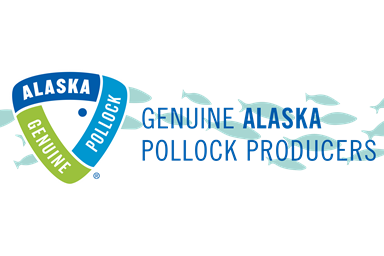October 12, 2020
Wild Alaska Pollock is Most Consumed Whitefish with Lowest Carbon Footprint
Wild Alaska Pollock is good for the planet and is working to prove that claim with a comprehensive industry-wide Life Cycle Assessment (LCA), the Association of Genuine Alaska Pollock Producers (GAPP) announced today. More than 81% of companies are more focused on sustainability today than they were three years ago which is likely a reflection of consumer demand for more sustainable products—a need that the Wild Alaska Pollock industry is keen to meet with new data and messaging, as discussed by sustainability and communications experts, today, at GAPP’s second-ever Annual Meeting.
“We know that Wild Alaska Pollock is great; we’ve heard all about it all day today,” said Melissa Zygola, Quantis Project Manager of the work completed to date. “But, how do we ensure everyone knows it’s great by ensuring transparency and data are at the heart of the fish’s story.”
The industry LCA takes into account three years of data provided by each segment of the fishery via questionnaires that were designed by Quantis and completed over the last several months. The questionnaires take into account both fishing and processing data and look at inputs including fuel and energy, cooling materials and other consumables like lubricants to ultimately total up the industry’s energy and carbon footprint emissions by sector.
As noted by Quantis, this industry LCA helps ensure that the fishery can continue to operate and assure customers—many of whom data shows are looking to make commitments like being carbon neutral—that the Wild Alaska Pollock industry not only can provide answers to the questions they’re asking, but also can help them achieve even their loftiest sustainability goals.
“We owe a huge thanks to all the GAPP members who helped this project forward by submitting data. This is a critical step in the industry’s sustainability story and it all hinges on being honest with yourself and your customers and that’s what this LCA and proactive communications all work to do,” said Zygola.
While Quantis is completing the detailed analysis and third-party expert review process, the next steps in finalizing the LCA results, GAPP will also be simultaneously working to further build out its sustainability story, proactively and play offense when it comes to further building brand awareness for Wild Alaska Pollock with consumers both in the U.S. and abroad.
According to proprietary consumer research commissioned by GAPP and conducted in August of this year, sustainability matters to consumer audiences and is also a key differentiator for Wild Alaska Pollock compared to other fish species.
“We tested a new catch-phrase that really resonated with consumers and will anchor the fish’s sustainability story,” said Caryn Leahy of Ketchum PR, presenting results from the consumer research conducted online “Bulletin Boards” in August and September. “Quite simply: Wild Alaska Pollock is good for you and good for the planet.”
The research further indicated that for Wild Alaska Pollock’s target audience—identified as affluent, educated millennial parents—sustainability is especially important. Specifically, 52% of respondents said that sustainability certifications were important (compared to 46% of the general population); 50% say ‘sustainable’ is an important attribute (compared to 43% of the general population); and 50% say that fish that is sustainable sourced is important (compared to 44% of the general population).
“When consumers are making purchasing decisions about fish, more than half of them are looking for some sort of certification,” said Amaral. “The importance of sustainability is not only presence at the business-to-business level but also at the consumer level. The time to communicate about the LCA and sustainability of Wild Alaska Pollock to consumers is now.”
The research also identified the most compelling mediums to talk to consumers about sustainability, with the grocery store ranking number one as their choice for reliable information about sustainable fish and seafood. The industry will need to fully leverage grocery stores and news media to tell its sustainability story most effectively.
“There’s truly an education hurdle that Wild Alaska Pollock needs to be mindful of; it’s a journey to bring consumers along,” said Amaral. “Keeping Wild Alaska Pollock’s sustainability language high-level and simple for consumers will tell a more compelling story, as not many are knowledgeable. Tell that story on the front of package as that’s where consumers are looking for it.”
The second-ever Wild Alaska Pollock Annual Meeting was held today, virtually. Sponsors for the event include: American Seafoods, Alaska Seafood Marketing Institute, Clark Nuber, Garrigan Lyman Group, Glacier Fish Company, Global Seas, Golden Alaska Seafoods, Starbound, Sysco Seattle, Trans-Ocean Products, OneforNeptune and UniSea.

